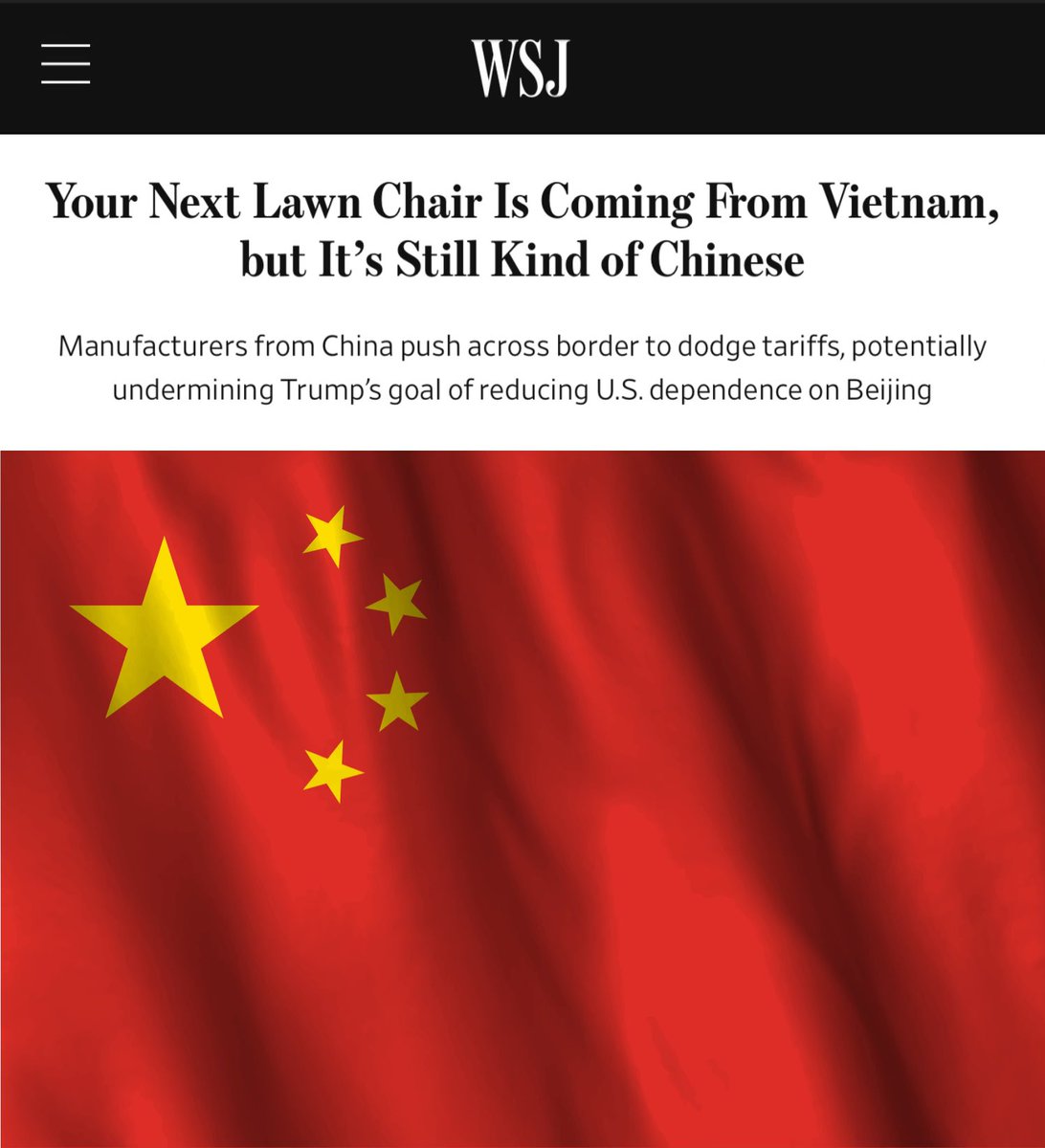[GUEST ACCESS MODE: Data is scrambled or limited to provide examples. Make requests using your API key to unlock full data. Check https://lunarcrush.ai/auth for authentication information.]  Byron Wan [@Byron_Wan](/creator/twitter/Byron_Wan) on x 40.9K followers Created: 2025-07-14 23:25:54 UTC The rush to produce in Vietnam and other lower-tariff countries, far from wiping China off the map, keeps 🇨🇳 companies at the center of the export trade. 🇨🇳 businesspeople typically have the edge when it comes to building factories anywhere in the world — even in the US. “They have all the technology, all the know-how. It will take them less time to set up factories in Vietnam than for local companies to develop their own capabilities.” The US has called on Southeast Asian nations to take a hard line on economic ties with China, including by stopping 🇨🇳 companies from setting up manufacturing and export operations in their countries. The goal is to reduce US dependence on 🇨🇳 companies regardless of where they are located. But for the first half of this year, China — including Hong Kong — was responsible for more than XXX new investment projects in Vietnam, far more than any other country. Much of the investment was concentrated in manufacturing. Take a look at Letright Industrial, one of China’s largest outdoor-furniture manufacturers with a customer list that includes Walmart and Lowe’s. Its factory in Thai Nguyen, near Hanoi, first opened in 2021 and today employs around XXXXX workers making lounge chairs, coffee tables and sofas. A set of six pieces can retail at American stores for around $XXX to $XXXXX. Teams of US buyers have visited recently to tour the factory and review their products. On the factory floor, laborers use laser-welding tools to construct sofa frames. Others hunch over waist-high tables, hand-weaving wicker chairs. With faux-natural materials popular in the US this season, a team of workers uses brown spray paint to make metal chairs resemble wooden ones. At the company’s testing center, a machine slams a heavy weight into the seat of a finished chair more than XXXXXX times, to prove its durability. Anticipating demand from US clients, the company is building a second factory here a 10-minute drive away and is hiring hundreds more workers while trimming the workforce at its home base in Hangzhou, China. Teams of Chinese welders and weavers have been dispatched to train the Vietnamese. The company’s ambitious goal: move XXX% of US-bound production to Vietnam this year, up from XX% last year.  XXXXX engagements  **Related Topics** [stocks technology](/topic/stocks-technology) [china](/topic/china) [countries](/topic/countries) [wan](/topic/wan) [Post Link](https://x.com/Byron_Wan/status/1944901195430289415)
[GUEST ACCESS MODE: Data is scrambled or limited to provide examples. Make requests using your API key to unlock full data. Check https://lunarcrush.ai/auth for authentication information.]
 Byron Wan @Byron_Wan on x 40.9K followers
Created: 2025-07-14 23:25:54 UTC
Byron Wan @Byron_Wan on x 40.9K followers
Created: 2025-07-14 23:25:54 UTC
The rush to produce in Vietnam and other lower-tariff countries, far from wiping China off the map, keeps 🇨🇳 companies at the center of the export trade. 🇨🇳 businesspeople typically have the edge when it comes to building factories anywhere in the world — even in the US.
“They have all the technology, all the know-how. It will take them less time to set up factories in Vietnam than for local companies to develop their own capabilities.”
The US has called on Southeast Asian nations to take a hard line on economic ties with China, including by stopping 🇨🇳 companies from setting up manufacturing and export operations in their countries. The goal is to reduce US dependence on 🇨🇳 companies regardless of where they are located.
But for the first half of this year, China — including Hong Kong — was responsible for more than XXX new investment projects in Vietnam, far more than any other country. Much of the investment was concentrated in manufacturing.
Take a look at Letright Industrial, one of China’s largest outdoor-furniture manufacturers with a customer list that includes Walmart and Lowe’s. Its factory in Thai Nguyen, near Hanoi, first opened in 2021 and today employs around XXXXX workers making lounge chairs, coffee tables and sofas.
A set of six pieces can retail at American stores for around $XXX to $XXXXX. Teams of US buyers have visited recently to tour the factory and review their products.
On the factory floor, laborers use laser-welding tools to construct sofa frames. Others hunch over waist-high tables, hand-weaving wicker chairs. With faux-natural materials popular in the US this season, a team of workers uses brown spray paint to make metal chairs resemble wooden ones.
At the company’s testing center, a machine slams a heavy weight into the seat of a finished chair more than XXXXXX times, to prove its durability.
Anticipating demand from US clients, the company is building a second factory here a 10-minute drive away and is hiring hundreds more workers while trimming the workforce at its home base in Hangzhou, China. Teams of Chinese welders and weavers have been dispatched to train the Vietnamese.
The company’s ambitious goal: move XXX% of US-bound production to Vietnam this year, up from XX% last year.

XXXXX engagements
Related Topics stocks technology china countries wan